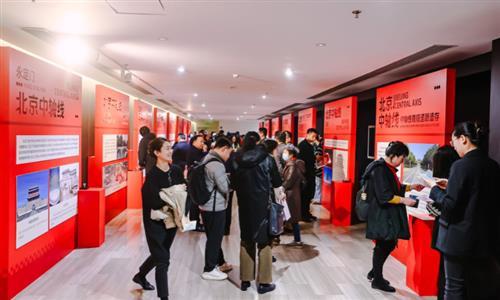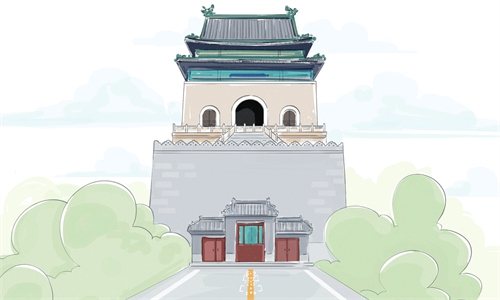ARTS / CULTURE & LEISURE
Ancient Divine Granary opens to public, adding a new star to Beijing's Central Axis

Photo: Li Hao/GT
With a momentous ceremony, the Divine Granary complex, part of the historic Xiannongtan Temple, or the Altar of the God of Agriculture, opened to the public in Beijing on Thursday, marking the complex's first public opening in over two centuries. The opening coincides with the 42nd International Day for Monuments and Sites.
The opening ceremony at the Divine Granary, now integrated into Beijing's Ancient Architecture Museum, was not just a ceremonial gesture but a reaffirmation of China's commitment to preserving and promoting its cultural legacies.
Situated along Beijing's Central Axis, the Xiannongtan Temple is an emblematic site within the city's symmetrical architectural plan, reflecting the grandeur of China's agrarian civilization.
The Divine Granary itself, established during the Ming Dynasty (1368-1644) in 1531 and relocated to its current location in 1753 by the Qing Dynasty (1644-1911) Emperor Qianlong, is pivotal to the temple's function.
As the Chinese saying goes, "When the granaries are full, the world will live in peace and stability."
Grain reserves are of great importance for social prosperity, stability and development. The Divine Granary Complex functioned to store grain harvested from the ceremonial farmland, demonstrating ancient Chinese wisdom.
It is thus hailed as the "Primary Granary in the World."
In the Qing Dynasty, during the second month of the Chinese calendar, the emperor himself would plow the ceremonial farmland. The grain harvested from the farmland in autumn would be stored in the Divine Granary as supplies for state sacrificial ceremonies in imperial temples and altars.
The granary's architectural beauty and functional importance are highlighted in the newly opened historical and cultural exhibition, which interprets the architectural features of the Divine Granary complex through its social roles, offering a deep dive into its historical and cultural significance, according to the Beijing Municipal Cultural Heritage Bureau.
With the ongoing efforts to nominate Beijing's Central Axis as a World Heritage Site, the restoration of the Divine Granary complex has been a significant milestone. The restoration included the demolition of non-historical structures and conservation of the original colorful frescoes, ensuring the complex's historical ambiance is meticulously preserved.
The new exhibition in the Divine Granary not only enriches the Xiannongtan Temple's cultural display but also complements the showcasing of Central Axis history, elucidating the heritage value of the area and perpetuating traditional Chinese culture. Interactive displays within the exhibition allow visitors to explore ancient measurement systems, making the historical experience both educational and engaging.
Thursday also marked the 42nd International Day for Monuments and Sites and commemorated 60 years of the Venice Charter, an essential document for conserving architectural and historic heritage.
Huo Zhengxin, a professor at the China University of Political Science and Law and vice president of the China Society of Private International Law, recently emphasized the significance of the Venice Charter. According to Huo, the charter affirms the essential value and role of historical monuments, viewing them as a shared legacy and testament of human history. This acknowledgment establishes a foundational platform for the theories and technical standards in cultural heritage protection.
Huo further highlighted that the Venice Charter serves as a crucial milestone in the evolution of human society's efforts to refine cultural heritage conservation. Its influence extends significantly to the drafting of subsequent international treaties, including the World Heritage Convention.





